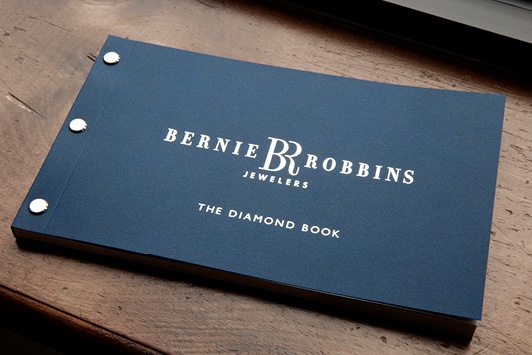
How do you go from selling air conditioners and toasters to diamond jewelry and Rolex watches? For Bernie Robbins Jewelers, there were several detours along the road to becoming a luxury jeweler with five stores — three in New Jersey and two in Pennsylvania.
The original Bernie Robbins opened as a major appliance store in downtown Philadelphia. “In the ’70s and ’80s, there were huge catalog showrooms — 100,000 square feet — and we gravitated toward that format, adding small appliances and jewelry,” explains company president Harvey Rovinsky, who is co-owner along with his wife Maddy.
“As that business started to fade, we closed out of appliances and, in 1984, transitioned into a middle-of-the-road jeweler selling 10-karat and 14-karat gold jewelry and nothing above a 1-carat diamond,” he continues. But sensing an opportunity, Rovinsky decided to change course. “My thinking was that there were hundreds of middle-of-the-road jewelers and just a handful of high-end jewelers in the area. In 1992, we entered the exclusive jewelry phase, where we are today.”
The power of brands
Rovinsky’s strategy revolved around acquiring “the best brands in the world.” As he points out, “people knew us from the appliance business, but not for high-end jewelry. If we could become associated with national and international brands, it would automatically give us credibility and cachet. Brands gave us coop dollars to advertise, and that made customers think: ‘If Bernie Robbins carries this brand, it must be a quality enterprise.’”
Some of the top brands at his stores today include Forevermark, Hearts On Fire, Marco Bicego, Rolex, Cartier and Tag Heuer. But while “we built our name on the brands that we acquired,” he says, “now we promote Bernie Robbins as the main brand. We never lose sight of that fact, and because of that, we understand how to treat the brands we sell.”
Another strategic imperative has been to open stores in “every luxury market in our region,” says Rovinsky, citing his store’s “homogenous” client base in affluent areas. “We open stores where our clients live, whether in Villanova [at the center of the Philadelphia Main Line area] or in Somer’s Point, New Jersey, near Ocean City” — which, according to Rovinsky is “as close to the Hamptons as you can get.”
In a deliberate design directive, all the stores look similar, if not identical, to create a seamless experience from one store to another, he adds.
Young luxury
Yet Rovinsky recognizes that appearing “too luxurious” may scare off new clients. “It’s a slippery slope. We don’t want threshold resistance so that young, first-time engagement buyers are reluctant to come into our stores because...they think we’re too expensive for them. Our goal is to market Bernie Robbins to young people and still maintain our image that we are a luxury jewelry store that carries the best brands. And it’s extremely important to emphasize the value message whenever we can.”
Rovinsky takes exception to the notion that only millennials want an “experience.”
“Everyone talks about experience. But we have been doing that for 25 years,” he says, adding that the in-store experience has evolved over time. “The reality is that no one needs jewelry. You have to want jewelry. In a way,
we look at ourselves as a toy store for adults. We have to make sure that this is a fun experience for them and that they walk out with beautiful jewelry.”
With market trends changing, Bernie Robbins’s marketing has “dramatically shifted” from traditional to more digital, says Rovinsky: The company no longer buys newspaper or TV ads, and it has increased its digital ad spend — both in terms of the dollar amount and as a percentage of its total ad budget. In an attempt to reach younger customers, the company is running a significant ad program with iHeart Media that skews to this demographic.
Family matters
While dedicated branding and marketing have contributed to Bernie Robbins’s success, Rovinsky is adamant that being a family-owned business allowed for the flexibility to “make decisions on a dime.”
“We’ve made mistakes. We’ve opened and closed over 10 stores in 25 years. But we learned and moved on,” he says. “As long as you’re nimble and continue to innovate and understand who your client is and what your client is looking for, no one is better at doing that than the family-owned business. They are the backbone of America.”
Image: The Diamond Book.Article from the Rapaport Magazine - October 2019. To subscribe click here.